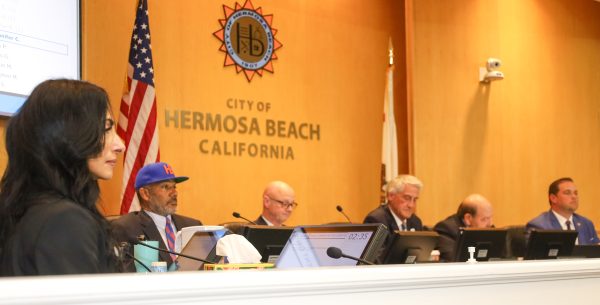
With pressure from local architects, realtors, developers and homeowners, the Manhattan Beach City Council on Tuesday decided to postpone action on the Planning Commission’s proposed zoning code amendments that further longstanding efforts to preserve the city’s small town character by reducing visual bulk of residential buildings.
Proposed changes concern the city’s standards for open space, setbacks, site area, alley access, parking clearances, nonconforming structures and minor exceptions, as part of its “mansionization” initiative.
But representatives from the local development community argued before the council that the proposed changes go too far.
“It’s not a slight adjustment, it’s a sledgehammer,” said Bryn Stroyke, a local realtor.
In April 2002, the City Council adopted a series of residential development standards with the goals of reducing mass and bulk of homes, prohibiting reduction in allowable buildable floor area and providing flexibility in architectural design. A “mansionization” committee was formed in December 2006, and the standards were amended several times up to 2008.
Under council direction this past January, the planning commission reviewed the effectiveness of existing zoning code amendments, to determine what was working and what wasn’t. The commission held two public hearings earlier this year and presented to council Tuesday its findings and recommendations.
The most contentious recommendation was the redefinition of usable open space, requiring at least 50 percent of the area, whether on a balcony, deck, porch or terrace, be uncovered with at least two open sides. This amendment addresses the “cave orientation” of stacked decks that the planning commission is largely concerned with, associate planner Eric Haaland said.
About 15 speakers, largely representing the local architect community, stood before council Tuesday to address what several described as a “disastrous” and unwarranted change, citing implications including a lack of architectural variety, negative environmental impact and loss of housing value. Several said they were unaware of the proposed changes until as recently as last week.
“This is a solution in search of a problem,” Stroyke said. He explained that his clients looking to buy property “love outdoor rooms” with covered space because “it’s not always 73 [degrees] when you want to be outside.” He predicted that every full standard lot in the sand section would lose up to $1 million in value under the proposed code.
Ray Joseph, a resident in the sand section, criticized the “mansionization” initiative for prioritizing the look of homes rather than their livability.
“I think it’s lifestyle versus ‘mansionization,’” Joseph said. “You’re designing houses by people walking by and approving of them versus people wanting to live in them … Why are we trying to make it harder for people to enjoy living here? Why are we trying to eliminate people from utilizing outdoor spaces?”
A local architect lamented that the city’s existing open space requirements are challenging as is.
“It takes a lot of creativity to achieve them,” another local architect said. “… With all due respect to the staff, any architect to design something like [shown diagram] would be summarily dismissed, frankly. The fact that you cannot do stacking decks anymore, that’s just huge.”
Mayor Pro Tem Amy Howorth called the deliberations “educational” and “positive,” and advised the planning commission to hold additional community meetings to gather as much input as possible. Planning director Richard Thompson said this amendment was not an urgent matter and said it may take a few months before the item is brought back to council.











